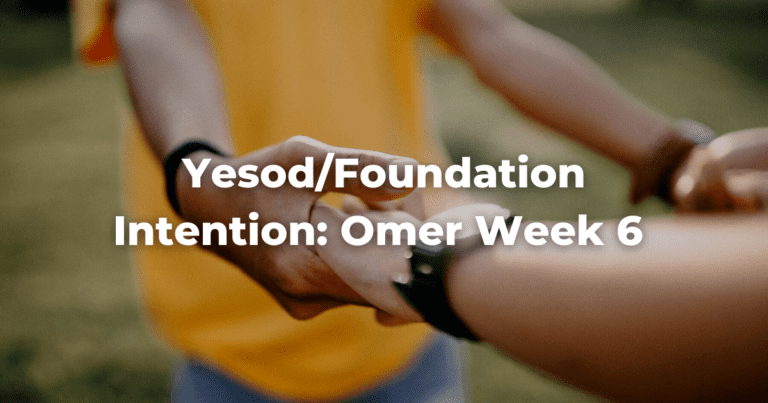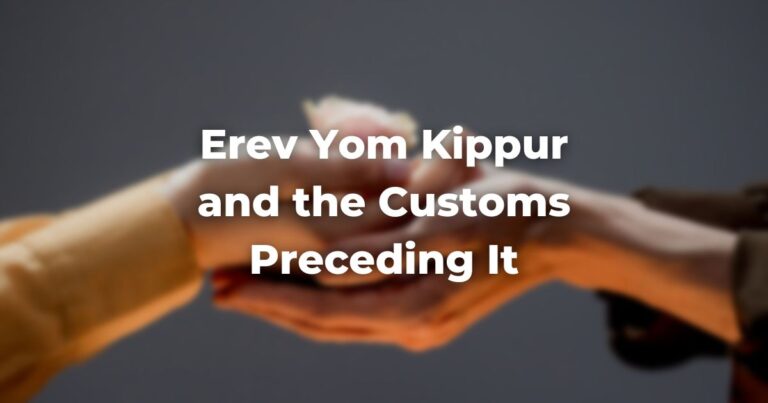If you tend to be tempted by food and therefore do not always observe the rules of kashrut…
If you struggle with alcoholism and your physical and emotional health are deteriorating while you ruin the bond with your family and friends…
If you have a bad temper and strong character and offend, sometimes generating fights and confrontations…
If you cheat on your partner because you cannot control yourself…
Perhaps the time has come for you to consider whether you are living according to the values you once committed to.
And questions arise: Can you repent? Should you repent? Would your repentance have value?
Along with Prayer-Tefilah, and Tzedakah-Social Justice, Teshuvah-Repentance is one of the central themes of the Yamim Noraim, the High Holidays.
Our tradition tells us that the month of Elul, which precedes Rosh Hashanah, is a time for Ḥeshbon Hanefesh, (literally, an accounting of the soul) a comprehensive assessment of oneself. It is a period of reflection that helps us achieve repentance and personal reparation.
With the new month, which in Hebrew is Ḥodesh, and signifies newness (from the root Ḥadash), we are called to renew ourselves, and with the new year, which in Hebrew is Shanah (from the word leshanot, to change), to change what harms us, harms others, and violates the ancient values of our tradition.
Jewish culture is essentially a culture of values and beliefs based on good and evil, in action and inaction; Ḥeshbon Hanefesh and Teshuvah are part of these beliefs.
The Jewish world has parameters and measures that force us to assess ourselves, Israel, and the world at large.
In the Bible, in general, and especially in the TorahRefers to the first five books of the Hebrew Bible, the Tanakh, also called the Five Books of Moses, Pentateuch or the Hebrew equivalent, Humash. This is also called the Written Torah. The term may also refer to teachings that expound on Jewish tradition. Read more, Ḥeshbon Hanefesh is very important in assessing both the community and the greater world. The first biblical example of this balance, as it relates to Ḥeshbon Hanefesh, in the form of an assessment of the entire world, is done by God:
Adonai saw how great was human wickedness on earth —how every plan devised by the human mind was nothing but evil all the time. And Adonai regretted having made humankind on earth. With a sorrowful heart, Adonai said: “I will blot out from the earth humankind whom I created, humans together with beasts, creeping things, and birds of the sky; for I regret that I made them.” (Genesis 6:5-7)
If, for a moment, we leave aside the theological problems that these verses present, the text, without a doubt, is a basic model of Ḥeshbon Hanefesh. The process we use to see the values reflected in our actions and the consequences of those actions. In this first Ḥeshbon Hanefesh, the immediate consequence is the Flood (the Noah story), and we find the following components:
The observation and review of the status quo, the conclusion that the situation was not positive, repentance, and the conclusion that arose from the repentance.
But is there only one possible form of Teshuvah-Repentance, or are other valid options and different methods available?
Rabbi Yehuda heḤasid explains Teshuvah in his book “Sefer Ḥasidim.” According to him, a pious 12th-century teacher, since the idea of Teshuvah is mentioned four times in Parashat Nitzavim, there are four modes for the concept and practice of Teshuvah
Teshuvat haBa’ah – repentance of reliving – is when the person returns to the situation in which they committed the fault or error. To the same conditions. They could fall and transgress again, as before the Teshuvah, but this time, they will pass the test and not commit the error.
On the one hand, it is the ideal of Teshuvah, in which we can demonstrate that we will not fail again. But it is high risk. It is returning to the place of transgression and perhaps stumbling again.
Teshuvat haKatuv – repentance based on the verse – when a person who made a mistake and is repentant must find in the Torah the decrees dictated as punishment for their transgression. The penitent then accepts a punishment akin to that proposed by the Torah.
In the case that death is decreed as punishment, one must take upon oneself dangerous castigations, but without going as far as suicide, which is prohibited.
Teshuvat haGader – repentance through boundaries – is the establishment of limits and boundaries for a person in order to avoid coming to transgress anew.
If you struggle with alcoholism, you should not get close to wine or alcoholic beverages; if you have problems with money, you will not handle money. If you committed adultery, you would not meet your lover again under any conditions. Avoiding, even limiting oneself more than usual so as not to fall into temptation again.
This mode of Teshuvah invokes prevention as its premise and is based on personal experience.
This option was highly recommended during the time of the pious Ḥassidei Ashkenaz, Medieval Pietists, like Yehuda heḤasid. It was preferred over the first option Teshuvat haBa’ah, which is considered the most complete. The Ḥassidim gathered around the Torah to study. They led an ascetic life, even stricter than the one proposed by the Halakha.
Teshuvat haMishkal – compensatory repentance – a person accepts deprivations equal to the pleasure they enjoyed when committing the error. It is intended to nullify the original pleasure through suffering.
This idea is totally opposite to the analysis brought by Maimonides.
For him, a doctor, philosopher, and rabbi, a person cannot enjoy transgressing, as error produces pain and suffering. Even when the person who transgresses is convinced, they have enjoyment and benefit. The truth is sinner was attacking their own happiness and pleasure.
Maimonides leaned towards the first mode, reliving and abstaining without punishment. For Maimonides, Teshuvah implies cleansing, clarity, and well-being of the soul, and he included it among the 613 mitzvot.
As Maimonides notes in the Laws of Repentance 2:1, Teshuvat haBa’ah is ideal, seeing a transgression as an error to be healed and repaired. (Maimonides and Yehuda heḤasid lived and wrote at the same time. EJ editors) Today, when we talk about Teshuvah, we talk about this option. Beginning with Ḥeshbon Hanefesh and continuing with Teshuvah, repairing those faults committed against our fellow and repairing them, and then with God by returning to the path of the mitzvot and the Torah.
However, I share the modes of the Ḥassidei Ashkenaz because, as we well know, we are not angels, nor totally righteous – like the Tzadikim – and perhaps the mode of Teshuvat haBa’ah, being in the same or similar situation again and not erring, is a tough ideal to aspire to.
Just as in the pages of the TalmudReferring to one of two collections, the Jerusalem and Babylonian Talmuds, edited in the 6th century, that contains hundreds of years of commentary, discussion, and exploration of the ideas in the Mishnah. One could describe it as Mishnah + Gemara = Talmud Read more, there are options and opinions to be reviewed in each generation; I propose to take a bit of what these Ḥasidim suggested to not make mistakes, heal ourselves, and improve our environment.
Specifically, if something hurts you, do not expose yourself to it. Place a limit, a fence (gader).
If you feel that you should equate something bad you did with a deprivation, go ahead, perhaps you can find inspiration in the Torah verses as Teshuvat haKatuv suggests.
Fasting, praying, and ancient rituals allow us the opportunity to share and celebrate tradition with family and friends. And they also invite and inspire us to begin Ḥeshbon Hanefesh and perform sincere Teshuvah, aspiring to be inscribed in the Book of Life.
**Translated by Rabbi Leandro Galanternik
Authors
-

Nació en Argentina, recibió su ordenación rabínica en el Seminario Rabínico Latinoamericano Marshall T. Meyer en diciembre del 2012 después de finalizar sus estudios en el Machon Schechter en Jerusalén. Egresada de la carrera de humanidades, The Open University of Israel. Se desempeñó durante más de 25 años como docente de estudios judaicos en instituciones primarias, secundarias y terciarias de la red escolar judía en Bs As. Hasta el 2017 se desempeñó como Rabina en la comunidad Bet Hilel, Palermo, Buenos Aires. Fue Decana del área de liderazgo religioso y del Instituto A. J. Heschel para la formación rabínica en el Seminario Rabínico Latinoamericano Marshall T. Meyer y presidenta de la Asamblea Rabínica Latinoamericana y actualmente es la presidente de la Asamblea Rabínica Latinoamericana. Coordina talleres de estudio y práctica de Musar para fomentar una vida de mayor significado y mejora en los vínculos. Da charlas en diferentes ámbitos, coordina grupos de estudio y realiza una intensa labor espiritual y rabínica. Desde agosto 2023 es la Rabina de la comunidad Benei Tikva. Judy está casada hace 40 años con Danny kohn y su familia está conformada por Tammy Kohn y Matías Chervonagura padres de Maia y Eitan y por Uri Kohn y Jeanette Blicher padres de Noa y Eden.
View all posts





